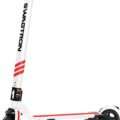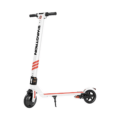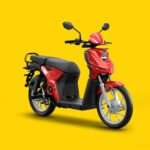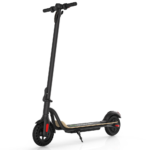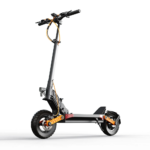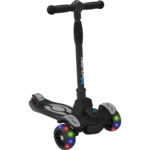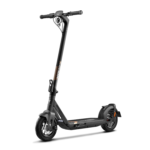- Home
- Scooters
- Compare Scooters
- Joyor S10-S-Z vs NIU KQi3 Max: The Complete Head-to-Head
Joyor S10-S-Z vs NIU KQi3 Max: The Complete Head-to-Head
Key Takeaways
- The Joyor S10-S-Z excels with dual hub motors, real suspension, and great performance on hills and rough terrains.
- The NIU KQi3 Max suits daily commutes with a single rear hub motor, portability, and a handy app for added features.
- Choose Joyor S10-S-Z for punchy launches and off-road capability, while NIU KQi3 Max is ideal for easy carry and urban use.
- Real-world feedback highlights Joyor for its power and ride comfort, while NIU is praised for fit and simplicity.
- For city living, NIU KQi3 Max is preferable; for rugged performance, go with Joyor S10-S-Z in the Joyor S10-S-Z vs NIU KQi3 Max comparison.
Picking between these two feels like choosing a vibe. One leans into power and rough streets. The other is a tidy city ride that’s easy to live with. So let’s go through the details and make the call simple.
At a Glance
Joyor S10-S-Z
- Dual hub motors that jump off the line.
- Long deck, chunky frame, real suspension travel.
- Great for hills, rough patches, and bigger riders.
NIU KQi3 Max
- Single rear hub tuned for steady city miles.
- Clean cockpit, handy app, quick fold.
- Great for daily commutes and easy ownership.
Quick Verdict
- Daily commuting: NIU KQi3 Max
- Hills: Joyor S10-S-Z
- Heavier riders: Joyor S10-S-Z
- Long range: Joyor S10-S-Z on larger packs; NIU if you ride mellow
- Portability: NIU KQi3 Max
- First-time value: NIU KQi3 Max
Performance & Ride Quality
Acceleration & Top Speed
The Joyor pops off the line and holds pull on long stretches. And the second motor keeps that punch when you need it. The NIU starts smooth, then builds speed in a calm way. So it feels friendly in traffic and less twitchy near pedestrians.
Top speed tells the story. Joyor aims high for wider paths and rough bits. NIU caps speed for city rules and sanity. And that cap helps with tire wear and brake heat, which is nice on tight commutes.
Hill Climb
Two motors help the Joyor chew through grades. Grip stays decent on broken pavement, then the wide contact patch keeps it planted. The NIU climbs, just slower. It ramps power to keep heat in check, and it will reach the top with a little patience. Even so, it stays predictable and easy to steer.
Range & Battery Management
Want more miles? Then look at pack size and how fast you ride. Joyor trims often come with mid to large batteries, which stretch far if you sit in lower modes. NIU pairs a commuter pack with smart protections, and it goes farther than you’d think if you cruise steady.
Good habits matter. So charge after rides, then store at room temp. Keep the scooter inside on very hot or very cold days. Over time, that keeps range stable.
Ride Comfort, Suspension & Tires
Joyor brings real suspension. It takes the sting out of potholes and curb edges, then settles the deck again. For instance, off-road tread can help on gravel paths, and the long deck gives room to shift your stance. NIU relies on big air tires and a stiff, tight frame. So the small chatter fades, steering stays crisp, and balance feels easy around slow turns.
Braking & Safety
Joyor setups often mix discs with regen. Lever feel is strong, then regen blends in without drama. So it pays to practice hard stops in a quiet lot and learn where the tire starts to talk. NIU runs discs with gentle regen, too. Bite starts mild, then ramps in a straight line. That tune keeps skids rare and feels steady in light rain.
Weather Resistance & IP Rating
Both target splash resistance. And both still need care when skies open up. So cover the charge port, wipe things down after wet rides, and skip deep puddles. Then give the brakes a few firm stops on a quiet street to clear water off the pads.
Design, Build & Reliability
Joyor feels beefy. The latch is chunky, welds look long, and the deck gives tall riders space. Cable runs stay out of harm’s way, then dive into the swingarms cleanly. Bolts do need checks, and a dab of thread locker on the busy ones helps.
NIU feels tidy. The stem guides your hands to a neutral grip, then the latch closes with a short, pleasant throw. Deck rubber runs edge to edge, which helps when it’s wet. The display, bell, and throttle sit where you expect them. And the wiring stays tucked out of sight.
Service is a split. Joyor uses common pads, rotors, and 10 in tires, so many shops can help fast. You’ll want monthly checks on the stem clamp and swingarm hardware. NIU uses brand electronics with standard wear parts. Pads and tires are easy to source. Firmware updates happen in the app, which makes life simple.
Portability & Everyday Use
Joyor is big. You can fold it and get it into a trunk, then carry it up a flight with effort. Stairs take planning. A shoulder strap helps for short climbs. So at home, lean it against a wall or roll it on the rear wheel to save space.
NIU folds quick and tidy. The latch clicks in one motion, bars stay aligned, then the weight sits close to your leg while you carry. Train steps feel fine, and office doors aren’t a pain. The kickstand is sure-footed, the headlight throws a tight beam, and the rear light is bright enough for city nights.
Smart Features & App Experience
Joyor keeps things classic. The display handles modes and basic settings, then you ride. Some trims add a simple app; others skip it. NIU ships with a mature app. You can switch modes, lock the scooter, adjust lights, and peek at battery health. Updates roll in over the air. Trip logs help you track use, which shops appreciate during service.
Ownership Costs & Support
Joyor parts are common. Pads are cheap, tires are everywhere, and tubes aren’t hard to find. So plan a set of pads per season if you ride a lot, plus a tube or two if streets are rough. Keep an eye on the latch and swingarm hardware. NIU pads last well under normal use. The tubeless setup helps with tiny punctures, though a plug kit is still smart to have. Lube the latch once a month and keep pressure checked weekly.
Support depends on where you live. Joyor spares show up at dealers and big parts shops. NIU has brand service lines and good stock on current models. And more cities now have techs trained on NIU, which speeds repairs.
Real-World Feedback Summary
Joyor owners talk about punchy starts, roomy stance, and travel that smooths ugly streets. They tighten bolts now and then, then dab thread locker on fender mounts and clamps. Brake feel improves with quality pads. Pressure checks keep tires happy and range healthy.
NIU owners praise the fit and finish, quiet ride, and simple app. The throttle feels calm and consistent. Steep hills slow it down, so folks pick a lower mode and let it work. Range stays solid with steady speeds. Weekly pressure checks keep it comfy.
Which One Should You Buy?
Choose Joyor S10-S-Z if…
- You want quick launches and strong hill speed.
- You ride rough lanes or light gravel and want real suspension.
- You’re near the top of typical weight limits and want extra headroom.
- You plan weekend path rides and some mixed surfaces.
- You accept more weight and a bigger fold.
Choose NIU KQi3 Max if…
- You want a calm city scooter that’s easy to carry.
- You like having an app for modes, lock, and updates.
- Your hills are mild and your pace is steady.
- You take stairs or trains and need a neat fold.
- You want simple service and consistent parts.
Scenario picks
- Short urban commute (≤6 mi / 10 km): NIU KQi3 Max. It’s light on hassle and friendly in crowds.
- Longer suburban runs (10–20 mi / 16–32 km): Joyor S10-S-Z with a larger pack, or NIU if you keep speeds chill and temps are warm.
- Hills: Joyor S10-S-Z. Two motors help a lot.
- Heavier rider (220+ lb / 100+ kg): Joyor S10-S-Z. Frame and motors give breathing room.
- Budget/value: NIU KQi3 Max for most new riders who want a smooth start.
Alternatives to Consider
- Segway Ninebot MAX G2: Commuter range, strong support network.
- NIU KQi2 Pro: Lower cost and weight for short, flat trips.
- Joyor S8/S9 series: Lighter Joyor choices with simpler power.
- Hiboy S2 Pro: Basic commuter for short, straight routes.
- EMOVE Touring: Comfort parts and a wide deck for mixed city use.
Scorecard & Winner
Weights: Performance 25, Range 20, Comfort 10, Braking 10, Portability 10, Features 10, Reliability 10, Support 5.
Scores are 0–10 per line. Totals add to 100.
| Criterion | Weight | Joyor S10-S-Z | NIU KQi3 Max |
|---|---|---|---|
| Performance | 25 | 9 | 6 |
| Range | 20 | 8 | 7 |
| Comfort | 10 | 8 | 7 |
| Braking | 10 | 8 | 7 |
| Portability | 10 | 5 | 9 |
| Features | 10 | 6 | 8 |
| Reliability | 10 | 7 | 8 |
| Support | 5 | 6 | 8 |
| Weighted Total | 100 | 74 | 75 |
Result: It’s tight. NIU KQi3 Max edges it for city life thanks to the fold, steady brakes, and an app that keeps things current. Joyor S10-S-Z still wins for riders who want punch, cushy suspension, and stronger hill pace.
FAQs
Is the Joyor S10-S-Z too much for a first scooter?
It can be, if you only ride in tight city streets. So start in the lowest mode, then practice braking in a quiet lot.
Can the NIU KQi3 Max do light gravel?
Yes, at low speed with smooth steering. Big air tires help on small stones.
Which one stops shorter on dry roads?
Both have discs and regen by trim. Joyor can stop very hard with good pads. NIU stays straight and calm with less lever effort.
How often should I check tire pressure?
Once a week. You protect range, grip, and your rims.
Do I need to grease anything?
Lube the Joyor latch monthly and check swingarm points. On NIU, lube the latch and keep pad faces clean.
Will the NIU handle steep streets?
Yes, at a modest pace. Pick a lower mode, let the controller manage heat, then give it time.
Can I ride in rain?
Light rain, yes. Skip deep puddles, dry the scooter after, then do a few firm stops to clear the pads.
How long do pads last?
Plan on a set per season with daily use. Hills and heavier riders wear pads faster.
What tools do I need at home?
A solid hex set, torque wrench, tire gauge, small thread locker, and a plug kit or tube based on trim.
Do these get firmware updates?
NIU does over the air. Joyor depends on trim and often sticks to display menus.
Final Verdict
Pick the NIU KQi3 Max if you live in the city, carry the scooter often, and like the app touch. The ride is calm, braking is steady, and the fold just works.
Pick the Joyor S10-S-Z if you want punch and comfort on rough streets. You’ll climb better, land softer, and have room to stand. The tradeoff is weight and a bit more tinkering, which many riders don’t mind.
Price
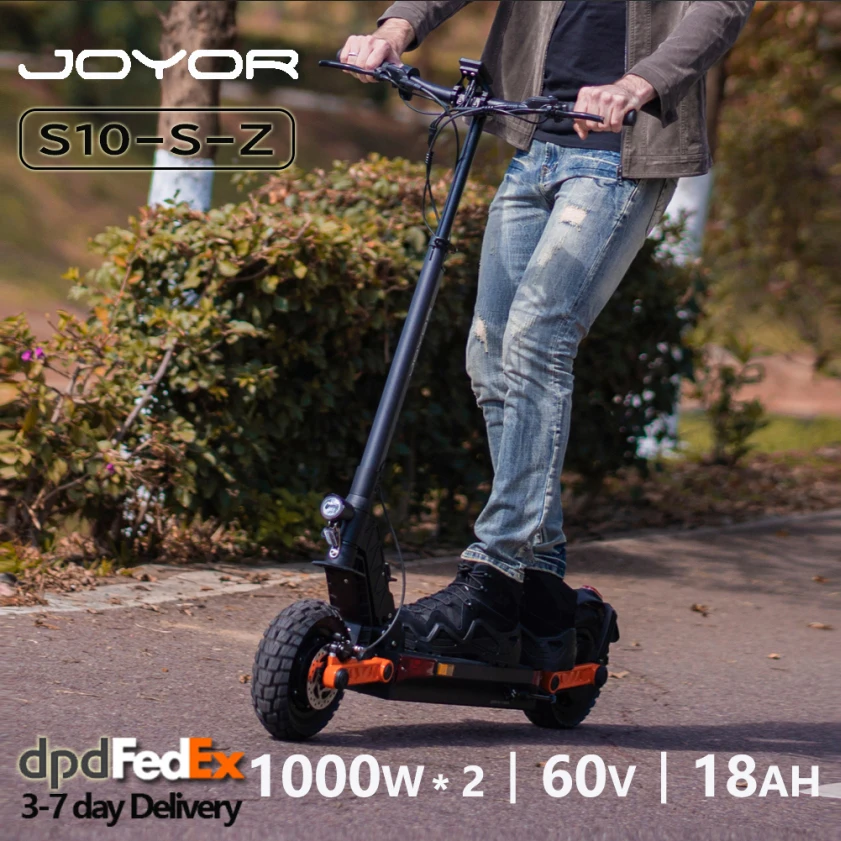
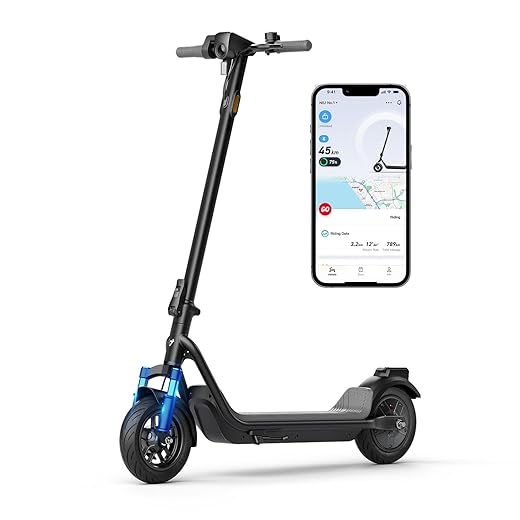
 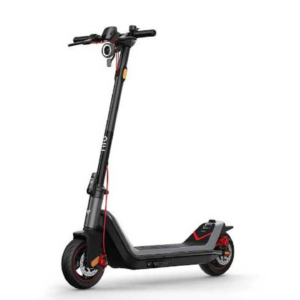 | |
| Price | |
| Our Rating | |
| Brand | JOYORNIU |
| Category | Electric ScootersElectric Scooters |
General
| Model The Model specifies the exact version or name of the scooter. It helps identify its unique design, features, and specifications within the manufacturer’s product line. Knowing the model makes it easier to compare options, find compatible accessories, or look up support information. | S10-S-ZKQi3 Max |
| Brand The Brand identifies the manufacturer or company that designs and produces the scooter. A trusted brand is a sign of quality, reliability, and good customer support. Well-known brands often have higher standards for safety, performance, and after-sales service, giving you more confidence in your purchase. | JOYORNIU |
| Release Date The Release Date indicates when the scooter model was officially launched on the market. This helps you know how current the design, technology, and features are. A newer release date often means updated components, improved performance, and the latest safety or smart features. | 01 January 202401 January 2022 |
| Recommended Age Recommended Age indicates the minimum age range that the scooter is designed for, based on safety, size, and ease of use. Following the recommended age helps ensure that riders can handle the scooter’s speed, weight, and controls comfortably and safely. Always check local laws and use protective gear, especially for younger riders. | Adults, ~14+ years14+ years |
Performance & Power
| Motor Power (Wattage) What it means: The motor power, measured in watts (W), shows how strong the scooter’s electric motor is. Why it matters: Higher wattage usually means better acceleration, more torque, and improved performance on hills or rough terrain. For example, a 250W motor is good for flat city roads and light riders, while a 500W or 1000W motor provides more power for faster speeds or climbing steep inclines. | 2 × 1000 W hub motors (~2000 W nominal, up to 3600 W peak)450 W nominal, up to 900 W peak |
| Top Speed The Top Speed indicates the maximum speed that the scooter can reach under optimal conditions. It’s usually measured on level ground with a fully charged battery and an average rider weight. A higher top speed allows you to travel longer distances faster, but always ensure you ride within legal speed limits and your personal comfort zone for safety. | Limited to 25 km/h (~15.5 mph) in regulated mode; up to ~60 km/h (~37 mph) unlocked32 km/h (~23.6 mph) when unlocked via app; 20 mph default |
| Battery Capacity Battery Capacity refers to the total amount of energy the scooter’s battery can store, usually measured in ampere-hours (Ah) or watt-hours (Wh). A higher battery capacity means you can ride longer distances on a single charge, reducing the need for frequent recharging. Keep in mind that actual range can vary depending on rider weight, terrain, speed, and weather conditions. | 60 V, 18 Ah (~1080 Wh)608 Wh (48 V, 12.7 Ah) |
| Estimated Range per Charge The Estimated Range per Charge indicates the average distance the scooter can travel on a single full battery charge. This range is calculated under optimal conditions, such as flat terrain, moderate speed, and average rider weight. Real-world range may vary depending on riding style, terrain, weather, and load. A longer range means fewer recharges and greater freedom for longer trips. | Up to 70 km (~43 miles), potentially up to 85 km in ideal conditions65 km (40 miles) claimed; ~24 miles (38 km) real-world |
| Hill Climb Ability Hill Climb Ability describes the maximum incline or slope that the scooter can handle while maintaining stable performance. It’s typically expressed as a percentage or in degrees. A higher hill climb rating means the scooter can tackle steeper hills without losing too much speed or power. Actual climbing performance may vary based on rider weight, battery charge, and terrain conditions. | Up to 20° incline (~36%)Up to ~25% gradient |
| Drive System The Drive System refers to how power from the motor is delivered to the wheels. Electric scooters typically use either a hub motor (directly integrated into the wheel) or a chain/belt drive system. A high-quality drive system ensures smooth acceleration, efficient power transfer, and low maintenance. The choice of drive system affects performance, noise level, and overall ride experience. | All-wheel drive (dual hub motors)Rear‑wheel hub motor |
Charging & Electrical
| Charging Time Charging Time indicates how long it takes to fully recharge the scooter’s battery from empty to 100% using the standard charger provided. Faster charging means less downtime and more time on the road. Actual charging time may vary slightly depending on battery capacity, charger output, and environmental conditions. | ~10–12 hours~8 hours with 108 W charger |
| Battery Type Battery Type refers to the specific technology used in the scooter’s battery, which affects performance, lifespan, weight, and charging time. Most modern electric scooters use high-quality lithium-ion (Li-ion) batteries because they offer a good balance of energy density, durability, and low maintenance. A reliable battery type ensures consistent power delivery and longer riding ranges. | Lithium-ion with smart BMS48 V lithium-ion with Smart BMS 7th Gen |
| Removable Battery A Removable Battery means the battery pack can be easily detached from the scooter for convenient charging and replacement. This feature allows you to charge the battery separately, swap it with a spare for extended range, or securely store it indoors in extreme weather. Removable batteries add flexibility and make it easier to keep your scooter powered up wherever you are. | NoNo |
| Regenerative Braking Regenerative Braking is an energy-saving feature that converts some of the energy normally lost during braking back into battery power. When you slow down or brake, the motor works in reverse to generate electricity, which helps extend the scooter’s range and improves overall efficiency. This system also reduces wear on traditional brake components, leading to lower maintenance over time. | NoYes |
| Lighting Lighting refers to the built-in front and rear lights that enhance visibility and safety when riding in low-light conditions or at night. Good lighting helps you see the road ahead and ensures that other road users can see you. Many scooters include LED headlights, taillights, and sometimes brake lights or side reflectors for added safety and compliance with local traffic regulations. | Full lighting system: front/rear LEDs plus side lights and integrated turn signalsFront LED halo, rear brake light; no built-in turn signals; includes mechanical bell and reflectors |
Build & Dimensions
| Scooter Weight Scooter Weight refers to the total weight of the scooter when fully assembled, including the battery. This affects how easy it is to carry, lift, and store the scooter when not in use. A lighter scooter is more portable and convenient for commuting, especially if you need to carry it upstairs or onto public transport. Keep in mind that a sturdy frame and quality components may add to the weight but also contribute to better durability and ride stability. | ~27 kg (59.5 lb)~21 kg (46.3 lb) |
| Maximum Rider Weight Maximum Rider Weight indicates the highest rider weight that the scooter is designed to safely support while maintaining optimal performance and stability. Staying within this limit helps ensure reliable acceleration, braking, and climbing ability, and it protects the frame, suspension, and motor from excessive strain. Exceeding the recommended limit may reduce performance and increase wear on components. | 120 kg (265 lb)up to 120 kg (265 lb) |
| Deck Size Deck Size refers to the dimensions of the scooter’s standing platform. A wider and longer deck provides more foot space, allowing you to stand comfortably and adjust your stance while riding. A well-sized deck improves balance and stability, especially on longer rides or at higher speeds. Compact decks, on the other hand, help keep the scooter lightweight and portable. | Wide, non-slip adult deckWide rubber-grip deck (~22.4 × 6.3 in / ~57 × 16 cm) |
| Handlebar Height Handlebar Height refers to the distance from the deck to the handlebars, which affects your riding posture and comfort. An appropriate handlebar height helps you maintain good balance, reduces strain on your back and arms, and makes steering more comfortable. Some scooters have adjustable handlebars to fit riders of different heights, while others have a fixed height for a streamlined design. | Hassle-free swingarm folding systemFixed; wide (~54 cm / 21.3 in) handlebar |
| Folding Mechanism The Folding Mechanism describes how easily and securely the scooter can be folded for carrying and storage. A well-designed folding system lets you quickly collapse the scooter into a compact size, making it convenient to transport on public transit, store under a desk, or fit into a car trunk. Look for sturdy latches and safety locks to ensure the scooter stays firmly in place when folded or unfolded. | YesYes |
| Dimensions Folded Dimensions indicate the size of the scooter when it’s fully folded. This measurement shows how much space the scooter will take up when stored or carried, making it easier to check if it will fit in your car trunk, under a desk, or in a closet. Compact folded dimensions are ideal for commuters who need to bring their scooter on public transport or store it in tight spaces. | Approx. 1120 × 610 × 525 mm; unfolded 1215 × 610 × 1230 mmApproximately 45.5″ × 21.3″ × ~19.8″ (with flat folded stem) |
| Material Material refers to the primary construction materials used for the scooter’s frame and key components. High-quality materials like aircraft-grade aluminum, reinforced steel, or durable composites provide strength, stability, and a lighter overall weight. A sturdy material ensures the scooter can handle daily wear and tear while maintaining safety and performance. | Aluminum alloy frameAerospace-grade aluminum frame |
Safety & Control
| Brake Type(s) Brake Type(s) describe the braking systems the scooter uses to help you slow down or stop safely. Common brake types include mechanical brakes (like drum or disc brakes), electronic brakes, and foot brakes. Many scooters combine multiple braking systems for added safety and shorter stopping distances. The type and quality of brakes affect your control, especially when riding at higher speeds or on slopes. | Front and rear hydraulic disc brakesDual front and rear disc mechanical brakes plus electronic rear regen brake |
| Suspension Suspension refers to the system that absorbs shocks and vibrations while riding, providing a smoother and more comfortable ride over uneven or rough surfaces. Scooters may have front suspension, rear suspension, or dual suspension for better shock absorption and stability. Good suspension helps reduce rider fatigue and improves control, especially when riding on bumpy roads or off-road paths. | Double swingarm suspension at front and rearNone; relies on large tubeless tires and rigid frame |
| Tire Type Tire Type refers to the kind of tires the scooter uses, which directly affects ride comfort, traction, and maintenance. Common types include solid (airless) tires, pneumatic (air-filled) tires, or hybrid options. Pneumatic tires offer better shock absorption and a smoother ride on rough surfaces, while solid tires are puncture-proof and require less upkeep. The right tire type helps ensure safe handling and a comfortable ride in different conditions. | 10″ pneumatic off-road air tires (wide)9.5″ tubeless pneumatic, air-sealed |
| Tire Size Tire Size indicates the diameter and width of the scooter’s tires, which affect ride comfort, stability, and how well the scooter handles different terrains. Larger tires generally offer better shock absorption and a smoother ride over bumps and rough surfaces, while smaller tires keep the scooter lighter and more portable. Choosing the right tire size helps ensure a balance between agility and comfort. | 10 × 3.0 inches9.5″ × 2.5″ (~241 × 64 mm) front & rear |
| Kickstand The Kickstand is a built-in stand that allows you to park your scooter upright when it’s not in use. A sturdy kickstand keeps the scooter stable and prevents it from tipping over, protecting it from scratches and damage. It also makes storing and accessing your scooter more convenient, whether you’re at home, work, or on the go. | YesYes |
| Water Resistance Rating Water Resistance Rating indicates how well the scooter is protected against water and moisture, usually shown as an IP (Ingress Protection) rating. This rating helps you understand whether the scooter can handle light rain, splashes, or wet roads without damage. While most scooters are not fully waterproof, a good water resistance rating adds peace of mind when riding in changing weather conditions. Always avoid deep puddles or submerging the scooter to protect its electrical components. | IP54 (body and electronics)IP54 (splash and dust resistant) |
Features & Extras
| Display/Console The Display (or Console) shows important real-time information about your ride, helping you monitor your scooter’s status at a glance. Typical displays show speed, battery level, distance traveled, and riding mode. Some models also include additional features like Bluetooth connectivity, app integration, or backlighting for better visibility at night. A clear and easy-to-read display enhances safety and convenience on every trip. | Multi-color LCD display: speed, battery, mode, turn indicatorsLED dashboard shows speed, battery, and mode; includes mechanical bell |
| Ride Modes Ride Modes refer to the different speed and power settings you can choose to match your riding style or road conditions. Common modes include eco for maximum range and energy efficiency, standard for everyday balance, and sport or turbo for higher speed and stronger acceleration. Switching between ride modes allows you to customize performance, conserve battery, and ride safely in various environments. | 3 speed levels plus cruise & walk modeFour modes: E‑Save, Sport, Custom, Pedestrian; plus app-enabled cruise control |
| Smart App Connectivity Smart App Connectivity lets you pair your scooter with a dedicated mobile app via Bluetooth. Using the app, you can monitor real-time ride stats like speed, battery level, and range, adjust settings such as ride modes or cruise control, lock the scooter for added security, and sometimes receive firmware updates. This feature adds convenience and allows you to personalize your riding experience right from your smartphone. | NoYes |
| Anti-Theft System The Anti-Theft System helps protect your scooter from unauthorized use or theft. This feature can include built-in alarms, electronic motor locks, GPS tracking, or remote locking through a mobile app. A good anti-theft system provides peace of mind when parking your scooter in public spaces, adding an extra layer of security to safeguard your investment. | No built-in systemApp-based lock and ride alerts (no NFC unlocking) |
| Cruise Control Cruise Control allows you to maintain a steady speed without continuously holding the throttle. This feature makes longer rides more comfortable by reducing hand fatigue and providing a smoother, more relaxed riding experience — especially on flat, open roads or bike lanes. For safety, cruise control can usually be easily activated or deactivated while riding. | YesYes |
| Accessories Included Accessories Included lists the additional items that come with the scooter to enhance your riding experience and convenience. Common accessories may include a charger, kickstand, bell, lights, phone holder, or carrying strap. These extras add value by making your scooter safer, easier to use, and ready to ride straight out of the box. | Charger, manual, reflectors, bell, USB port on displayCharger, manual, bell, reflectors |
Warranty & Compliance
| Warranty Period The Warranty Period indicates how long the manufacturer guarantees the scooter against defects in materials and workmanship under normal use. A good warranty provides peace of mind, showing the brand’s confidence in its product quality. Always check what parts are covered, such as the frame, battery, and motor, and follow the maintenance guidelines to keep your warranty valid. | ~24 months (frame), 12 months or 2000 km for battery, depending on regionTypically 24 months (US/EU regions) |
| Certifications Certifications confirm that the scooter meets specific safety, quality, and environmental standards set by recognized organizations or regulatory bodies. Common certifications may include CE, RoHS, UL, or other local compliance marks, depending on your region. These certifications ensure that the scooter is manufactured to high standards and is safe and legal to use in your country. | CE, IP54, EU RoHS compliant; may lack approval for public use in Spain/Germany under DGT/ABE limitsUL‑2272, CE; IP54 water/dust protection |
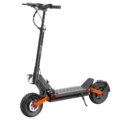 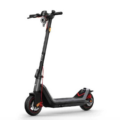 |






